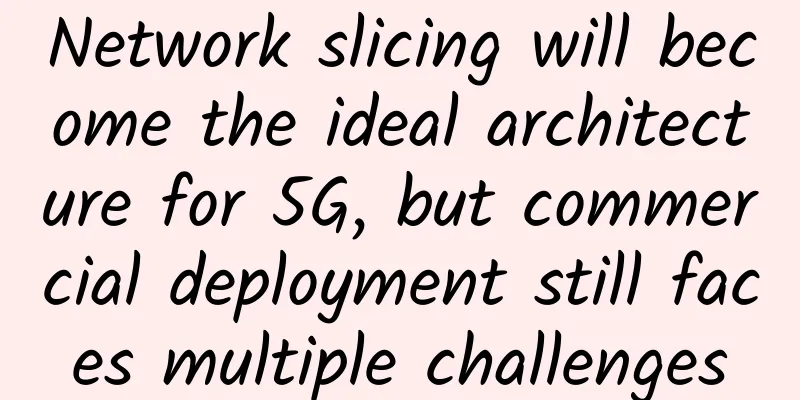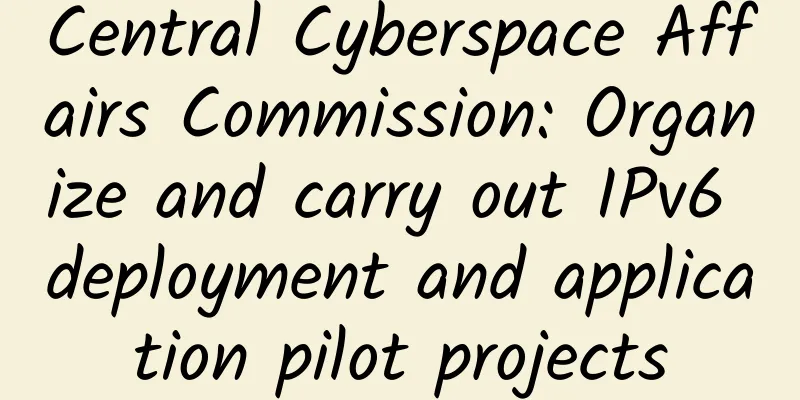Network slicing will become the ideal architecture for 5G, but commercial deployment still faces multiple challenges

|
The 5G era is coming, and applications based on mobile networks are becoming more and more abundant. In order to meet the differentiated needs of many applications, network slicing is the most discussed technology in the research process of 5G technology. The concept of network slicing allows network elements and functions to be easily configured and reused in each network slice to meet specific application requirements. Therefore, many industry insiders believe that network slicing is the ideal network architecture in the 5G era. Network slicing technology allows operators to divide multiple virtual end-to-end networks in a hardware infrastructure. Each network slice achieves logical isolation in terms of equipment, access network, transmission network and core network, adapting to various types of services and meeting the different needs of users.
For each network slice, exclusive resources such as network bandwidth, service quality, and security can be fully guaranteed. Since the slices are isolated from each other, the error or failure of one slice will not affect the communication of other slices. The advantages of network slicing technology make it occupy an important position in 5G networks. The progress of network slicing standards by 3GPP, NGMN, and GSMA meets the network's demand for flexible support for different services under the 5G framework. Different standard organizations such as 3GPP, NGMN, and GSMA have conducted relevant research on network slicing. 3GPP Network Slicing Standard Progress Since 2015, 3GPP has started the research and formulation of 5G-related standards, and plans to complete the formulation of relevant standards in three major versions, R14~R16. As an important technology of 5G, network slicing has received great attention from 3GPP. SA1 scenario research, SA2 framework formulation and SA5 network management have all formulated special topics for network slicing. SA1 conducted a demand analysis on network slicing as a basic capability of 5G in TS22.261, and believed that network slicing can provide operators with customized networks, and can meet users' differentiated needs in terms of priority, billing, policy control, security, mobility and other functions, as well as differentiated needs in terms of latency, reliability, rate and other performance. 5G slicing can also serve group users such as public safety and MVNO, making the network more flexible. In addition, the SA1 working group also requires that the subsequent 5G system standards must meet the above slicing requirements. The SA2 working group proposed three alternative network slicing scenarios in the TR23.799 next-generation network architecture research. Solution A: All functions of the core network are sliced. A core network slice instance includes both the user plane and the control plane. Solution B: The shared functions of the control plane of the core network are not sliced. As the shared parts of each slice, the user plane and the control plane functions that are not suitable for sharing are sliced. Solution C: The core network control plane is not sliced and functions are shared, only the user plane is sliced. After discussion, it was decided that only the slicing scheme of Plan B (Scheme C is a special scenario of Plan B) would be considered before R15, that is, only partial functional slicing of the user plane and control plane would be considered, as shown in Figure 1. Figure 1 Schematic diagram of network slicing in Solution B In addition, the SA2 working group reached the following conclusions regarding functions such as slice selection and implementation (see Chapter 5.15 of the TS23.501 specification for details).
Currently, the SA2 working group is conducting further discussions and research on whether the slice selection module should be deployed in conjunction with existing modules (such as AMF) or deployed separately. It is also conducting further confirmation and research on issues such as the management of network slices and their association with transmission. In terms of network slicing management, based on the requirements of standard organizations such as SA1/SA2/NGMN for slice management and configuration, the SA5 working group studied the management and scheduling methods of slices, as well as slice management across multiple partners and domains, to automatically implement and manage the isolation of resources between different slices. To cater to more flexible sliced networks, SA5 has made it clear that SON will also play an important role in 5G. Currently, the research report TR28.801 on network slice scheduling and management is about to be completed. NGMN Network Slicing Standard Progress NGMN introduced the concept of network slicing in its 5G white paper, believing that this technology can flexibly select modules and resources on the user plane, control plane, and wireless side based on business needs, optimize network resource allocation, achieve maximum cost efficiency, and meet the needs of diverse new 5G services. As shown in Figure 2, network slicing is defined as a comprehensive concept that includes the service instance layer, network slice instance layer, and resource layer. The service instance layer identifies the services supported by this slice, which can be provided by network operators or third parties; the network slice instance layer allows operators to create slice instances, and the resource layer provides shared resources for each slice instance to use. Figure 2 Network slicing concept defined by NGMN The white paper points out that in order to achieve the above-mentioned flexible architecture, the user plane and the control plane must be completely separated, and open connections must be established between the modules. The white paper also points out that how to divide the granularity of modules and slices is a complex issue. Fine granularity can bring better flexibility, but it will also greatly increase the complexity of management and deployment. GSMA Network Slicing Standard Progress As an organization with extensive participation of mobile operators, GSMA also attaches great importance to the research and industrial application of network slicing. In 2017, GSMA set up the NEST project team to conduct research on network slicing to support vehicle applications. The working group started the relevant research work in March 2017 and is expected to complete the research on how 5G mobile networks can better serve the vehicle industry-related applications within one year and form a slicing document for reference by the automotive industry. To achieve this goal, GSMA has already started collecting requirements from the automotive industry and defining targeted network slicing parameters. Domestic network slicing testing has entered the second stage. In the first half of 2016, the IMT-2020 Promotion Group and various units jointly formulated network slicing test specifications. The test was conducted on a voluntary basis in the laboratories of various manufacturers. Huawei, ZTE, Ericsson, Shanghai Nokia Bell, Datang Telecom, Intel and other units participated in the corresponding tests, which were completed in the third quarter of 2016. At the *** stage, the equipment of various manufacturers is basically still in the prototype stage. The test mainly focuses on functionality, and tests more than 20 use cases around features such as slice templates, slice lifecycle management, slice selection, slice sharing, slice multi-access, slice maintenance, and slice business indicators. The second phase of test specifications are currently under discussion, and plans to test slice selection, slice orchestration capabilities, linkage expansion, and business capability verification of typical slices. The test specifications are expected to be frozen by the end of June 2017. The second phase of testing further adds functional items and focuses on usability. The tests are uniformly conducted at the China Academy of Information and Communications Technology. Deployment, management and application face many challenges. As can be seen from the previous analysis, the standards for network slicing are still being formulated and improved, and the tests that can be carried out in the industry are still in the laboratory stage. As a mobile operator, in addition to paying attention to the progress of technical research, we are more concerned about the deployment, management and application of slices. Before network slicing meets the requirements for commercial deployment, the following issues need to be focused on and resolved. The granularity and flexibility of slice division Slices have attracted much attention because they can meet the needs of various services and different user groups through network segmentation. How many slices to divide and what the granularity of the slices is are complex issues that cannot be avoided during the deployment process. If the slice granularity is too large, it will easily lead to insufficient flexibility and fail to meet the requirements of differentiated services; if the slice granularity is too fine, it will greatly increase the complexity of management and deployment. In addition, since resources between slices cannot be dynamically shared, too fine a slice granularity will also reduce the utilization of network resources. The biggest advantage of slicing is the flexible release and deployment of services. Different operators have different views on the flexibility of slice deployment. Some operators hope that slices can be deployed very flexibly, just like the 4G policy control architecture with a certain degree of real-time performance. Some operators believe that overly flexible slices may increase the cost and risk of network management. After all, stability and reliability are also important network considerations, and the release of new services is not achieved overnight, and requires a lot of business preparation and analysis. End-to-end slicing implementation The 5G slicing vision mentioned by NGMN in the 5G white paper is the realization of end-to-end network slicing, which includes not only slicing of the core network user plane and control plane, but also slicing of the wireless side. Only end-to-end slicing and network refinement can meet the special requirements of special scenarios in terms of latency, security, etc. At present, the research on wireless slicing is limited to supporting the core network slicing function, and the wireless slicing scenario has not been considered separately. The existing core network slicing function cannot well meet the differentiated needs of typical business scenarios. The lack of wireless network slicing cannot well reflect the value and advantages of slicing, and it is impossible to get a good commercial promotion. When the wireless side slicing function will be completed brings technical uncertainty to the end-to-end slicing application. Slice virtualization management SDN/NFV is the cornerstone of slice technology. Slice functions should be incorporated into the virtualized management and scheduling system. 3GPP SA5 has carried out relevant research. Limited by the progress of SA2 and RAN architecture research, SA5 has not yet given a clear conclusion on slice management. In addition, how to improve the response speed of virtualized management to ensure the flexible and reliable implementation of slices also needs to be further studied. In the slicing scenario analysis of TS23.501, three typical applications of 5G are currently clearly proposed, namely eMBB, uRLLC and mMTC. Considering the compatibility with the existing network, can the 4G network be managed and accepted as a special slice of 5G? If technically feasible, it will avoid considering the complex interoperability issues between 4G and 5G, protect existing investments, and greatly facilitate existing network users. Slicing applications 5G has been highly anticipated since its birth, hoping that 5G can meet the needs of various complex application scenarios such as eMBB, uRLLC and mMTC. Based on the different network requirements of different applications, network slicing came into being under the 5G architecture. Good applications and good business models are the driving force for network development. It is hoped that when 5G is deployed, the network will no longer be a pipe and data carrier, but a rich network that glues applications and users at the beginning of deployment. To this end, slicing should pay more attention to application needs at the beginning, combine typical applications in the industry when formulating technical specifications, and deploy it together with applications during deployment. At present, GSMA has carried out relevant work and set up a special project team to study the slicing needs and networking of the automotive industry. At present, there is no active participation of automobile manufacturers or operators in the discussion of needs. In order to really use slicing well, the participation of application companies is indispensable from technology formulation to network testing to operation. Only in this way can the market for slicing applications be developed well. |
>>: Think about these three details clearly, and your Internet of Things will be truly implemented!
Recommend
Tudcloud: Hong Kong VPS with 20% off monthly payment and 30% off annual payment starting from $7.2/month, with options of large bandwidth or unlimited traffic
Tudcloud has launched this month's regular pr...
Ten tips to increase page browsing time
[51CTO.com Quick Translation] Increasing the brow...
China Telecom will start 5G independent networking next year, earlier than China Mobile and support 2,000 yuan mobile phones
[At the Tianyi Exhibition, China Telecom once aga...
Virtono saves 10 euros: Romania/UK/Dallas KVM annual payment starts from 4.95 euros
Virtono has launched a promotion where people can...
Huawei fully opens HMS and calls on more developers to join the new all-scenario smart ecosystem
[51CTO.com original article] The 2019 Huawei Deve...
Telefónica and Microsoft combine private 5G and edge computing for Industry 4.0
According to foreign media reports, Spanish Telef...
Embracing the edge: Unleashing the potential of on-board computing
Most discussions about technology transformation ...
Three major dilemmas of big data
【51CTO.com Quick Translation】 Big data, as a set ...
Unlimited traffic ≠ unlimited traffic usage. Have you ever encountered this kind of "trap"?
"Use data nationwide as you wish", &quo...
Huawei's Hu Houkun: To promote the new development of 5G, the industry should prepare for the metaverse, 5GtoB and low-carbon development
On October 13, the 2021 Global Mobile Broadband F...
Digital twins, the Internet of Things, and new technologies that can help remote work
In recent years, the traditional offline working ...
Google open-sources network-opt for optimizing network topology
The Internet has become the most important issue ...
TmhHost: US AS9929 line from 30 yuan/month, US CN2 GIA/Hong Kong CTG monthly payment from 40 yuan
TmhHost is a Chinese hosting company founded in 2...
WiFi signal is strong but speed is slow? Here’s how to fix it!
The company's wireless WiFi signal is strong,...
Low-power wide-area network LPWAN: Can different factions of technology coexist?
The Internet of Things is considered to be the th...









![[Black Friday] HostDare: 15% off Los Angeles CN2 GIA line VPS, starting at $42.4 per year](/upload/images/67cac21ee8bfc.webp)